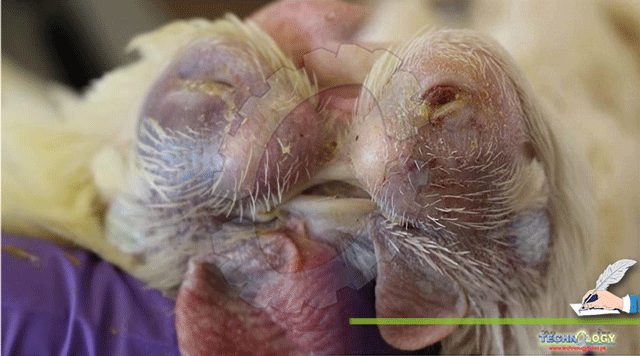Infectious Coryza is a respiratory disease. Infectious Coryza occur due to a bacteria named as Avibacterium paragallinarum.Clinical signs of Infectious coryza are Runny nose, laziness and face swelling.

By Abdul Samad, Dr.Ali Tahir, M. Hamza, Muhammad Ali Jan, Areeb Ahmer, Ayesha Muazzam and Sania Tariq
Introduction to Disease
Effected bird could be recover by using antibiotics at initial stage. We can prevent birds from infectious coryza by adopting appropriate measures of biosecurity, good managemental practices and doing vaccination of birds. Infectious Coryza seen in many country and it effect especially multistage farm.
Other Names
Contagious catarrh
Cause of Disease
Infectious Coryza is caused by a bacterium name as Avibacterium paragallinarum. It is gram negative Bacteria. Many birds effected by infectious coryza but mortality rate in this disease is 20%.
Route of disease Transmission
Bacteria enters in the body by conjunctiva or nasal route. It have incubation time of 2-3 days while it effects whole flock in 10 days. It cannot transmit in egg so it is not vertical disease. Bacteria remains alive 2-3 days outside of the bird’s body. Use of disinfectant and heat will kill bacteria
Signs of disease
Swelling of Face, Watery discharge from eyes and nose of bird, swelling of wattles, Wheezing, Poor respiration, 10-40% decrease in egg production and Anorexia. Coryza not usually cause death of the bird but it decrease down the production of bird (egg and meat). It also effects on FCR of bird as bird will not eat feed properly so it will also give low weight which cause economical lose for a farmer
Post Mortem Lesions
Inflammation in Conjunctiva, Adherence of eyelids, Conjunctiva contain Caseous material, Hemorrhages on trachea
How to find out disease
It can be diagnose by PCR.Gram-negative Isolation technique History of bird. Postmortem analysis. Hemagglutination-inhibition test
Treatment
Some Antibiotics are used as treatment in chicken which act as bactericidal and might prevent bird from disease.Streptomycin, Dihydrostreptomycin, Sulphonamides, Tylosin, Erythromycin and Flouroquinolones are some common antibiotics which are used to prevent bacterial infection.
Control measure
There are two methods to control the disease
- Biosecurity
- Vaccination
Biosecurity
We should follow the strict rule for bio security. No one from outside should enter in the shed.Use sanitized equipment. Always use one time needle and sanitized needle while doing vaccine.Disinfectant should use after one flock during cleaning of house. In large farm BBB level of biosecurity should be adopt.
Vaccination
Several vaccines are available to help prevent coryza, however, they can cause production losses and mortality. Vaccination is usually only used in areas where the disease is commonly found or when an outbreak occurs. The management practice, in areas where this is common, is to remove the affected flock, clean and disinfect the premises, and not repopulate the flock until three weeks after disinfection. As with all diseases, the best prevention is practicing good biosecurity
.Differential diagnose
There are some important differential diagnosis
Important differential diagnoses are Fowl cholera, MG, ILT, ND,IB,AI, Head swollen syndrome and hypovitaminosis A
Use of Herbal drugs
Use herbal drugs as it will not cause of drug resistivity and have higher effect on disease recent studies tells that use of herbal disease instead of Antibiotics are useful.
Advantage of Herbal Drugs
Fight against disease. Does not have any negative effect on bird. Prevent drug resistivity. No residuals remains in egg and meat which make safe meat and egg for human
Key points
IC is a respiratory disease which is caused by a bacteria named as Avibacterium paragallinarum effecting Avian groups.It can be diagnose by using PCR. We can minimize the occurrence of disease by using different strategies like improving the management, doing vaccination, adopting all in and all out strategies, following measures of bio security and using Antibiotics in feed.